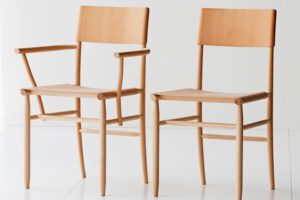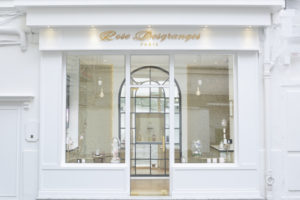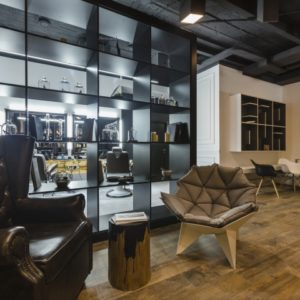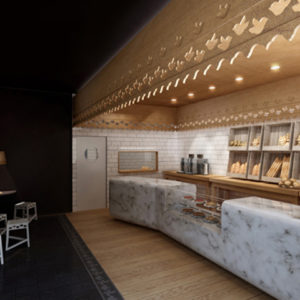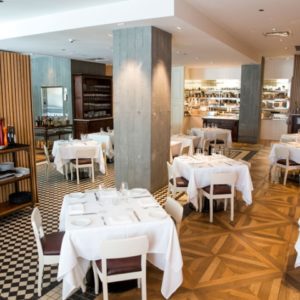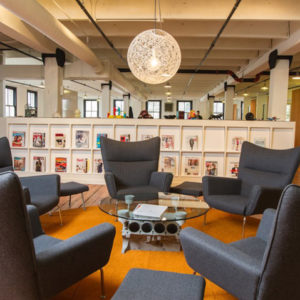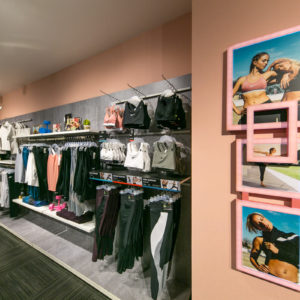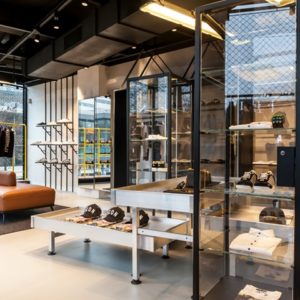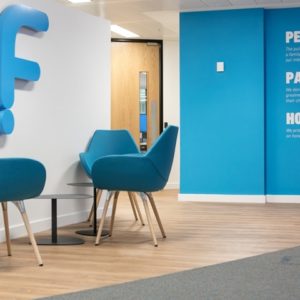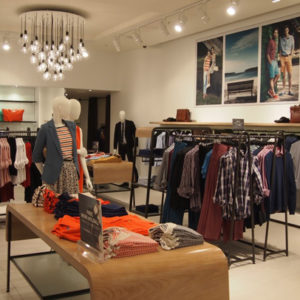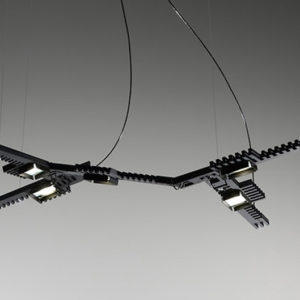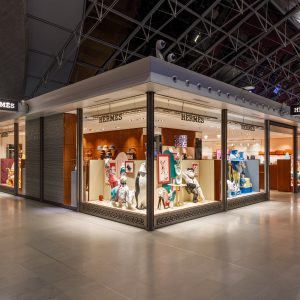


By plugging into the pulse of trendsetters, artists and “streetwear hounds,” global sporting goods giant adidas (Herzogenaurach, Germany) has found an imaginative channel for balancing brand consistency with localized store design. Dubbed Neighborhood, or “NBHD,” the new retail concept rolled out in its flagships in Berlin; Shanghai; Seoul, South Korea; and London enhances the cachet of adidas’ Originals collections by uniquely translating the spirit of each city into regional store adaptations that connect with these communities’ creative youth cultures.

The adidas Originals Berlin flagship, which opened in March 2014, was first to explore the idea. Here, core aspects were introduced to provide a design foundation for the Shanghai and Seoul venues, which opened last July, followed by the London address in August.
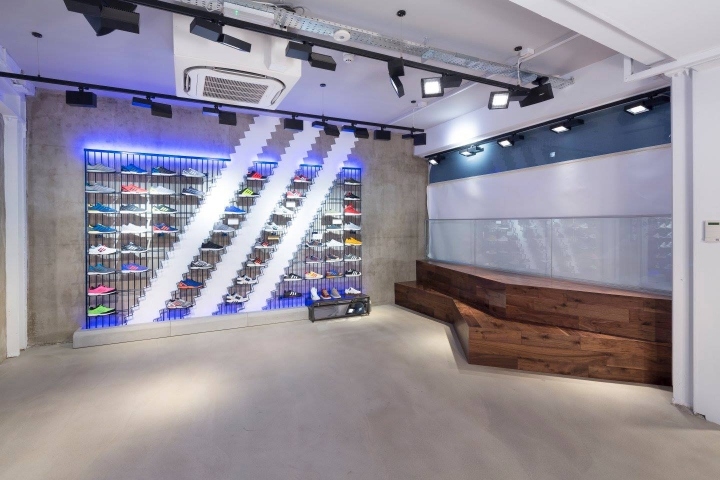
Adidas met the challenge of conveying brand consistency by establishing principles that are store-to-store hallmarks, interpreted individually for each locale. The classic Originals trefoil symbol has been reimagined and married with a 3-D map of each store’s host city; limited edition ZX Flux shoes have been designed to coincide with each launch; and “manifestos,” voicing the vibe of each neighborhood’s streets, influenced the visual artists who translated these conversations into craft.
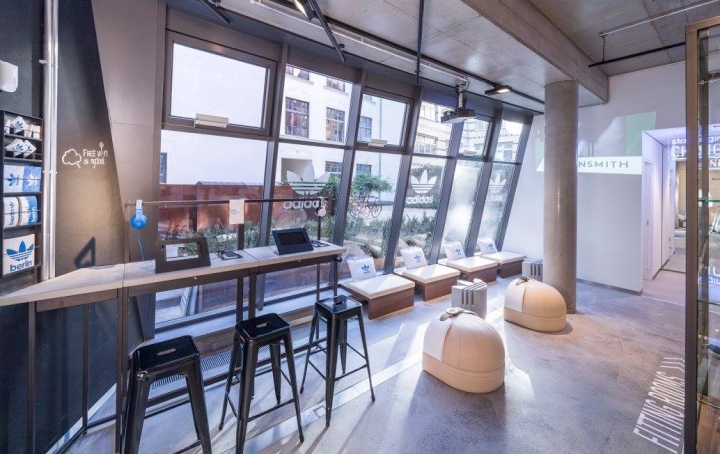
Oliver Fehl, adidas’ senior director of retail concepts, explains that the brand relied on its local teams’ deep-rooted knowledge of resident artists and influencers to give each store its buzz and differentiation. “The artists we are partnering with fully understand the legacy of styles and associated facets of the culture,” Fehl says. “In addition, each store supports local creatives through exhibitions that showcase their work.”
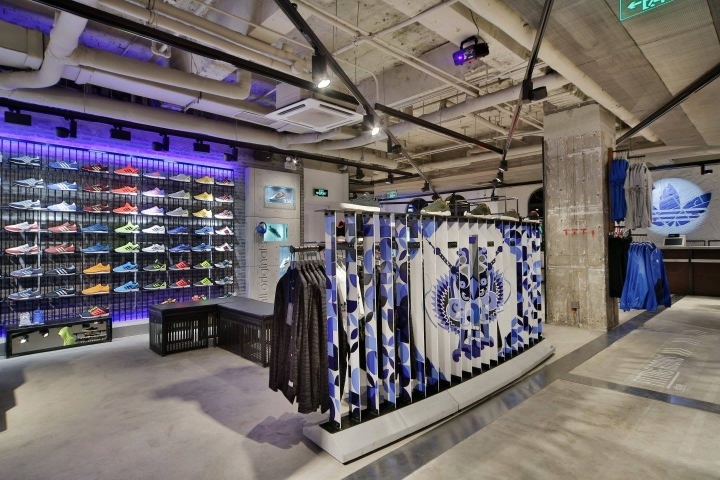
Locals expressed thoughts about Berlin’s Kiez culture, or city spirit, to help compose the German store’s manifesto, then graphic designer Saskia Hahn, creative duo Sonice Development (Berlin) and photographer Oliver Rath, translated the concepts into physical installations. Visual artists like Lu Xinjian, Island6 (Shanghai), and Sean Xiao translated the Shanghai store’s philosophy into tangible artistry. In Seoul, adidas partnered with artist RoadStarr, whose contemporary graphics translate into Hangul, the Korean alphabet, and spell out the store’s motto: “Together, we make things happen. Not for what we can, but for what we want. Not for anyone else, but to be one of a kind.” In London, spoken-word artist George the Poet helped develop a declaration interpreted by creatives such as photographer Charlotte Rutherford, street-artist Malarko and animator Andy Baker.
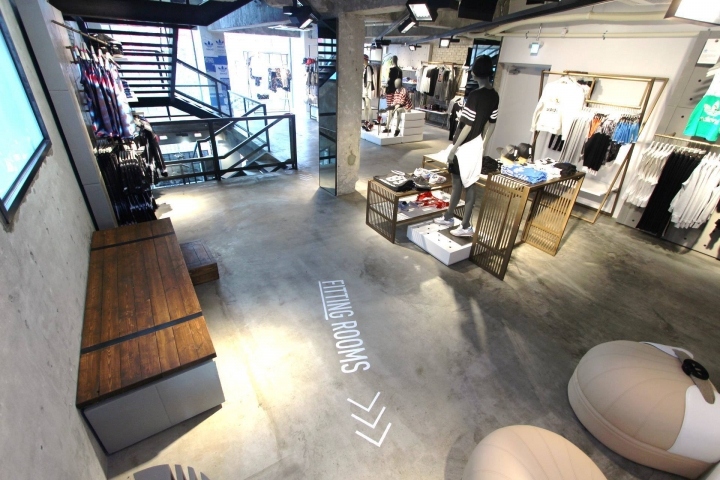
Key to NBHD’s credibility, the architectural style of each venue should have an authentic, urban vibe. “The Neighborhood concept provides us with the depth to use the streets as our inspiration and utilize the raw elements of each building to its maximum potential,” Fehl says. “Our aim was for every space to feel real, honest, unfiltered and experienced.”
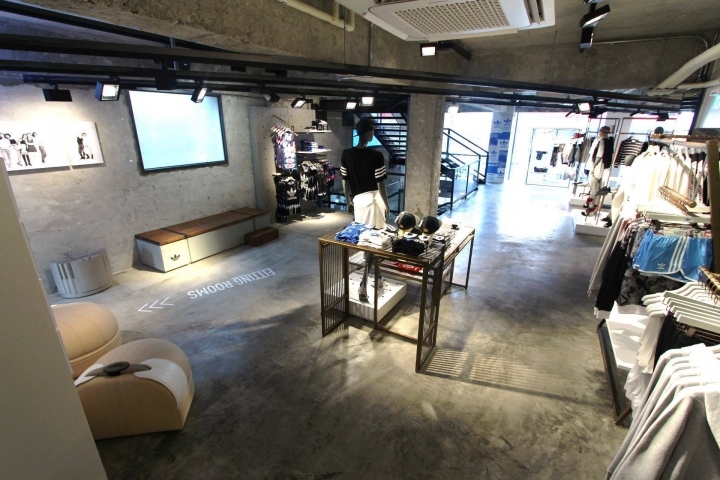
JOURNEY OF DISCOVERY
Each location offered unexpected elements hidden behind plastered walls: old brickwork that was cleanable, closed windows that could be opened and existing flooring that could be renewed. At the Shanghai flagship, the heritage façade of the former Jia Hotel was retained to better integrate the store into the historic architecture of the building. Shanghai brick clads the footwear display walls, while seating is an interpretation of a northern-Chinese kang – a brick platform warmed by a fire below. The Seoul location, comprising exposed concrete, masonry and randomly placed windows, tells the story of past generations housed in the space. In London, the layers were stripped back to original brick, plaster finishes and steel beams that add to its gritty authenticity.
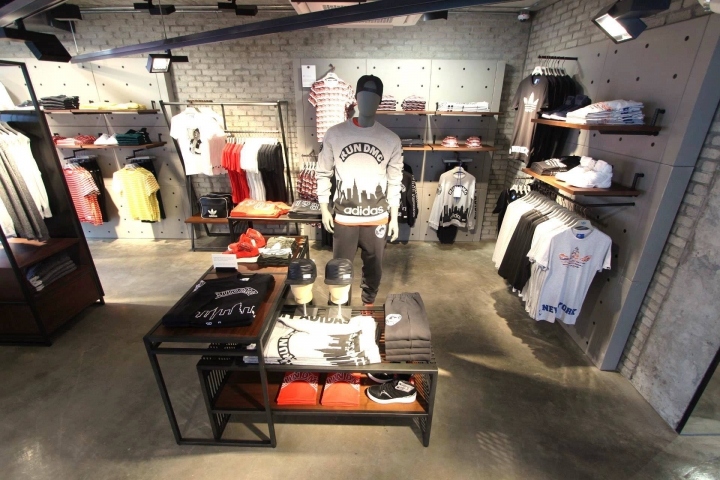
Inspired by public transit system power lines found in major metropolitan hubs, the layout supported by the lighting system is a subtle reinforcement of brand identity that plays on the iconic three-striped adidas logo. Retro-style vending machines offer a creative approach for merchandising compact apparel such as underwear, socks and smartphone cases. Next in line to receive the NBHD treatment are flagships in Barcelona, Milan and Tokyo – all designed to connect with the heritage and culture of avid adidas devotees.
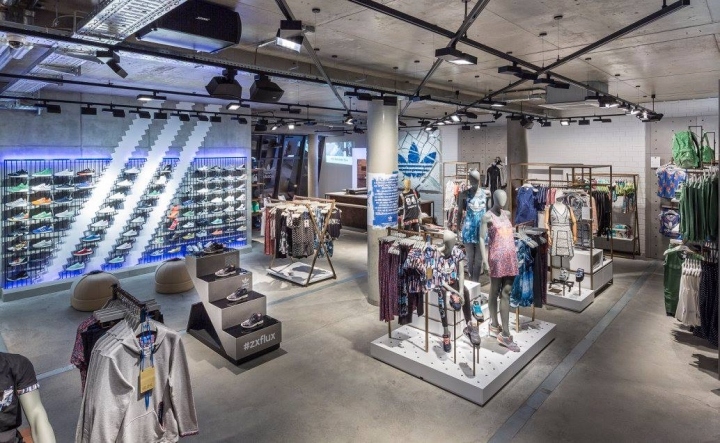

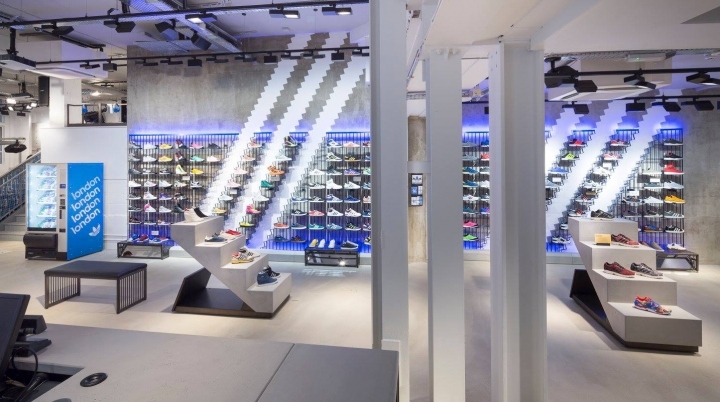
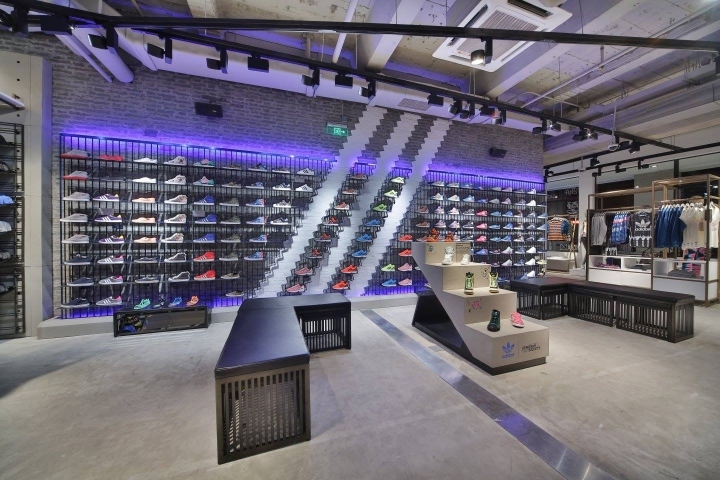
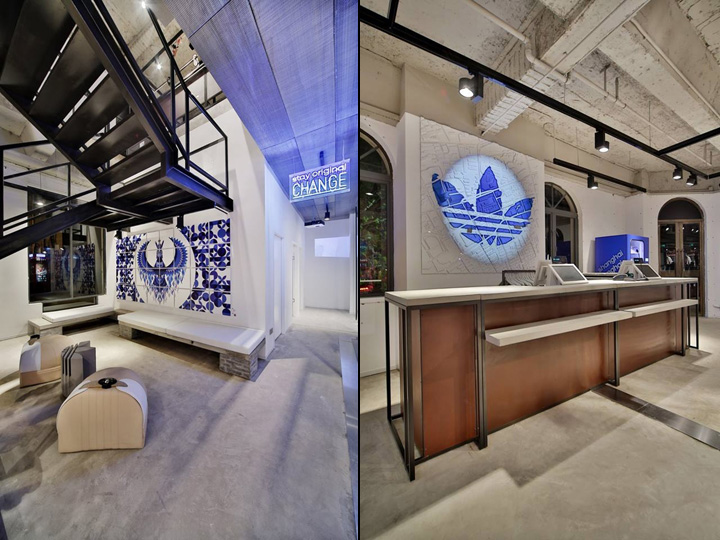
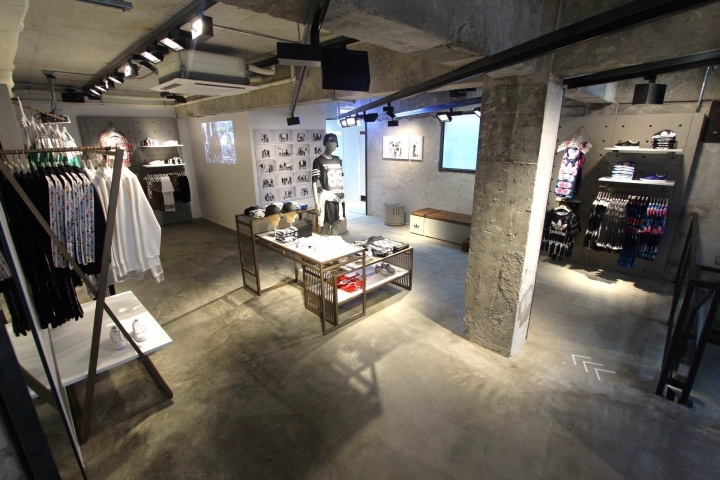
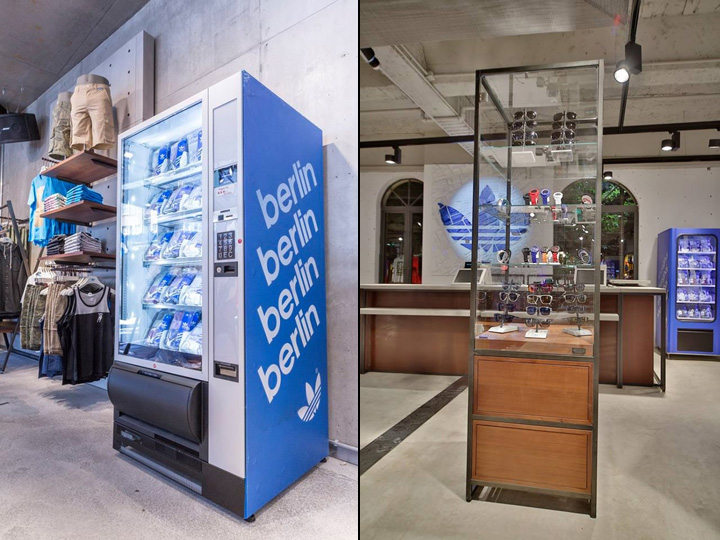
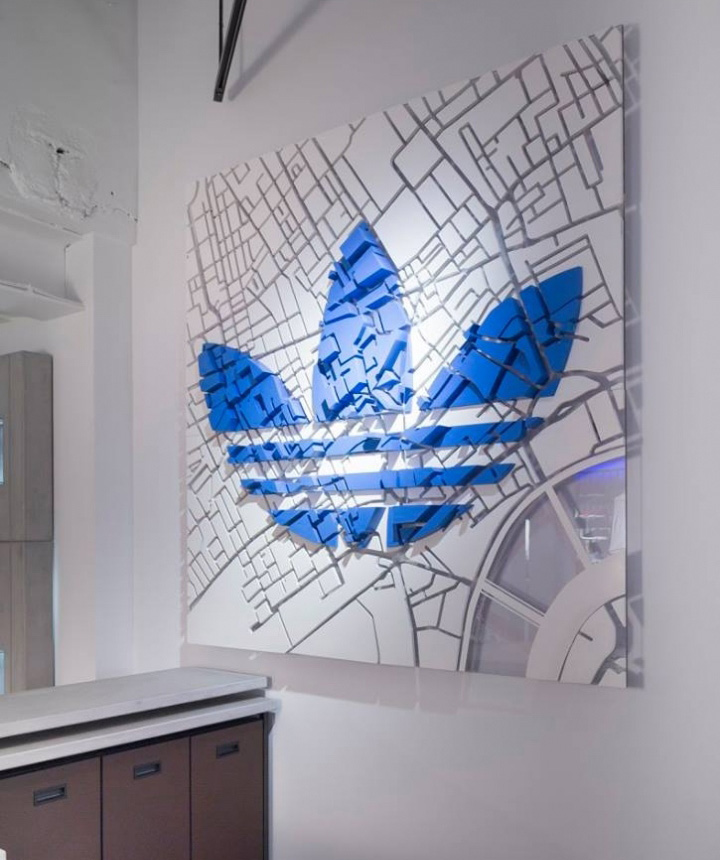

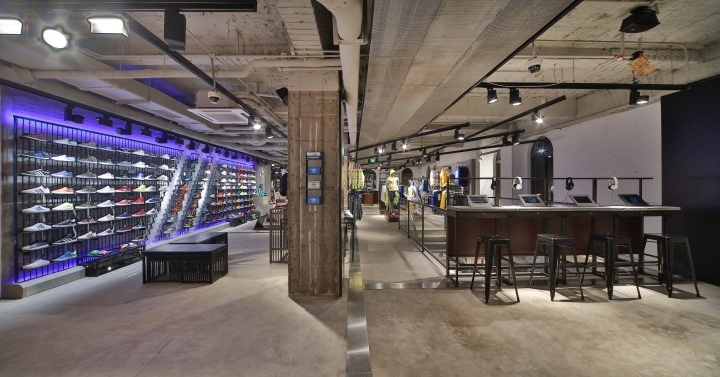

via Glamshops



















